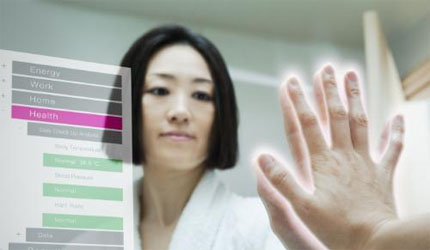IBM Study on Connected Health Devices
Consumers have a growing appetite for health and wellness devices, and this represents a burgeoning market opportunity for device manufacturers that has barely been tapped, according to a study from IBM.
The company also unveiled a list of possible wellness device innovations of the future, which have the potential to change how people live, exercise and interact with their healthcare provider over the next five years.
Increasingly, wellness devices will be used to fill the information gap for consumers that are relatively healthy, but need devices that provide information to help them gain greater control over their conditions and lead healthier lives.
These devices will plan, predict and monitor information, feeding it directly to caregivers and clinicians as well as support networks. Users will interact with devices on their own terms, and connect them via broadband, wireless and wireline connections.
Conducted by the IBM Institute for Business Value, the study indicates that the growing demand for devices is driven by “information seekers” — people who will increasingly turn to technology to help manage health-related challenges to reach their wellness goals.
The study surveyed more than 1,300 consumers currently using health and wellness devices and found that these consumers are demanding a new generation of health devices, greater simplicity and better information sharing.
Users want the ability to connect with their caregiver and reduce office visits to their healthcare professionals and the added ability to collaborate online with a community of peers with similar issues and interests.
And they are willing to pay for it. More than one third of current device users surveyed expect to contribute to the cost of new health devices over the next two years while 35 percent also expect to pay a monthly service fee.
“People want to take a more active role in managing their healthcare – both to reduce costs and improve their quality of life,” said Katherine Holland, general manager, IBM Life Sciences.
“Device makers have a great opportunity to fulfill this need – but to be successful, they must partner to ensure they have the blend of skills, consumer understanding and healthcare expertise.”
Whether connected online, to a PC, gaming device, tablet or smart phone, wellness devices will become ubiquitous in the future, especially in caring for the sick, the elderly and those in need of medical assistance, but also for healthier people who want to achieve wellness goals, believes IBM.
According to the survey, users will expect devices to easily share information with their family or healthcare professionals. Additionally, they require:
Ease of use – 96 percent said ease of use is the top factor in selecting one device over another.
Reasonable pricing – Costs at or below $100 is a critical decision factor according to three quarters of users who consider price well ahead of features, customer support, warranty or stylish design.
Real-time information sharing – 86 percent of consumers want real-time, easy-to-understand feedback from their devices.
Eighty percent of those surveyed are living with chronic illnesses while the other 20 percent were caregivers. The survey was conducted in both the United States and the United Kingdom.
The survey findings were announced Monday, June 27.





